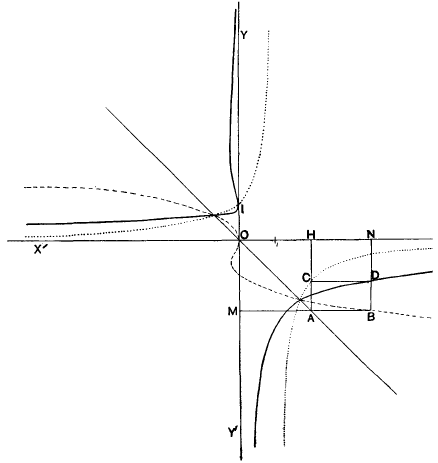No CrossRef data available.
Article contents
A Method of Graphing Freedom Equations
Published online by Cambridge University Press: 31 October 2008
Extract
Core share and HTML view are not available for this content. However, as you have access to this content, a full PDF is available via the ‘Save PDF’ action button.
Draw axes XOX′, YOY′. Draw graph of y = φ(t), taking OX as a positive axis of t. (In Figure  see dotted line). Draw graph of x =f(t), taking OY′ as positive axis of t. (In Figure f(t) = t3 – t2; see broken line). Take any point A in the line
see dotted line). Draw graph of x =f(t), taking OY′ as positive axis of t. (In Figure f(t) = t3 – t2; see broken line). Take any point A in the line

1+x = 0. Go along line through A parallel to OX till a point B a the graph x =f(t) is met, and vertically parallel to OY until a oint C in the graph y = φ(t) is met. The fourth vertex D of the ectangle ACDB is a point in the graph of the eliminant of t in he equations x =f(t), y = φ(t).
Information
- Type
- Research Article
- Information
- Copyright
- Copyright © Edinburgh Mathematical Society 1909

